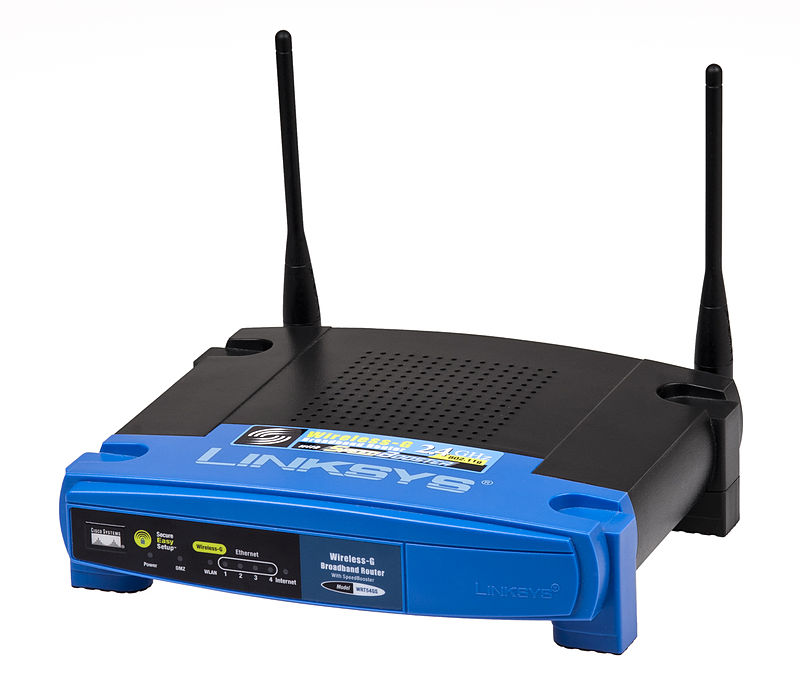A wireless router is a device that performs the functions of a router and also includes the functions of a wireless access point. It is used to provide access to the Internet or a private computer network. It can function in a wired LAN (local area network), in a wireless-only LAN (WLAN), or in a mixed wired/wireless network, depending on the manufacturer and model..
Features
Most current wireless routers have the following characteristics:
- One or multiple NICs supporting Fast Ethernet or Gigabit Ethernet integrated into the main SoC
- One or multiple WNICs supporting a part of the IEEE 802.11-standard family also integrated into the main SoC or as separate chips on the printed circuit board. It also can be a distinct card connected over a MiniPCI or MiniPCIe interface.
- So far the PHY-Chips for the WNICs are generally distinct chips on the PCB. Dependent on the mode the WNIC supports, i.e. 1T1R, 2T2R or 3T3R, one WNIC have up to 3 PHY-Chips connected to it. Each PHY-Chip is connected to a Hirose U.FL-connector on the PCB. A so-called pigtail cable connects the Hirose U.FL either to a RF connector, in which case the antenna can be changed or directly to the antenna, in which case it is integrated into the casing. Common are single-band (i.e. only for 2.4 GHz or only for 5 GHz) and dual-band (i.e. for 2.4 and 5 GHz) antennas.
- Often an Ethernet switch supporting Gigabit Ethernet or Fast Ethernet, with support for IEEE 802.1Q, integrated into the main SoC (MediaTek SoCs) or as separate Chip on the PCB.
- Some wireless routers come with either xDSL modem, DOCSIS modem, LTE modem, or fiber optic modem integrated.
- IEEE 802.11n compliant or ready.
- Some dual-band wireless routers operate the 2.4 GHz and 5 GHz bands simultaneously.
- Some high end dual-band wireless routers have data transfer rates of at most 300 Mbit/s (For 2.4 GHz band) and 450 Mbit/s (For 5 GHz band).
- The Wi-Fi clone button simplifies Wi-Fi configuration and builds a seamless unified home network, enabling Super Range Extension, which means it can automatically copy the SSID and Password of your router.
- Some wireless routers have 1 or 2 USB port(s). For wireless routers having 1 USB port, it is designated for either printer or desktop/mobile external hard disk drive. For wireless routers having 2 USB ports, one is designated for the printer and the other one is designated for either desktop or mobile external hard disk drive.
- Some wireless routers have a USB port specifically designed for connecting mobile broadband modem, aside from connecting the wireless router to an Ethernet with xDSL or cable modem. So, can be inserted a mobile broadband USB adapter into the router to share the mobile broadband Internet connection through the wireless network.
Most popular manufacturers
- 3Com
- Apple Inc.
- Belkin
- Buffalo Technology
- D-Link
- Linksys
- Motorola
- Netgear
- TP-Link
- Communications Corp.
Operating system
The most common operating system on such embedded devices is Linux. More seldomly, VxWorks is being used. The devices are configured over a web user interface served by a light web server software running on the device.
It is possible for a computer running a desktop operating system such as Windows to, with appropriate software, act as a wireless router. This is commonly referred to as a SoftAP, or "Software Access Point".
Aside from the OEM firmware, for a couple of wireless routers a third party firmware called OpenWrt is available. It is described as a Linux distribution for embedded devices.

